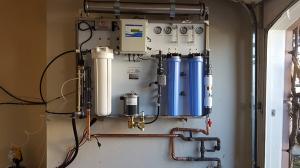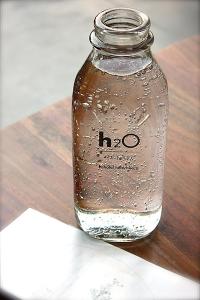
BORON—Friend or foe?
Medical and agricultural communities refer to boron as a micronutrient. Commercial uses for boron are abundant as well. Is this common element friend or foe?
VISTA, CA, UNITED STATES, July 29, 2021 /EINPresswire.com/ -- Unless you are old enough to remember early TV shows sponsored by 20 MULE TEAM BORAX, there’s a good chance that you have never heard of boron.
As a close cousin to carbon on the Periodic Table of Elements, boron is a very lightweight element that appears worldwide on land and in the oceans in various concentrations. Scientists have not universally agreed whether boron originally comes from the sea and aerosols to land or dissolves from land sources and finds its way to the sea via surface water discharge. It doesn’t exist naturally as the element boron, but rather as solid boric acid (H3BO3) or as borax (Na2[B4O5(OH)4].8H2O). Both forms are readily water-soluble, so boron can also be found in well water supplies because it dissolves in rainwater and percolates through the soil into aquifers. Aquifers in contact with borax mineral deposits as well as those with seawater intrusion will also have elevated boron levels.
Commercial uses for boron compounds range from improving rare earth magnets for electric vehicle batteries to a detergent additive. As a detergent additive, borax (see above formula) actually precipitates the calcium (hardness) and leaves the sodium in the water. This process is similar to physical water treatment non-salt water softeners which are rapidly replacing salt type water softeners with devices that use zero water and discharge zero pollutants to drain.
Both the medical and the agricultural communities refer to boron as a micronutrient. In this status, some presence of boron is vital to human and animal development as well as plant health. For humans and animals, boron works in concert with vitamin D to assist the assimilation of calcium which is necessary for bone, tooth, and brain tissue growth and maintenance. Ideally, humans will ingest approximately 1 mg of boron daily through consumption of green, leafy vegetables, drinking water, and non-citrus fruits. Above 3 milligrams daily some health issues may arise including diarrhea, vomiting, indigestion, and headaches. Fatal doses are in the 15,000 to 20,000 range. Drinking water has the potential of raising the boron intake above healthy levels, thus the USEPA sets a non-mandated limit of 2 (children) to 3 (adults) milligrams per liter; the World Health Organization limit is 2.4 mg/l, and states including California set an upper limit of 1 mg/l.
In plant growth, the effective uptake and use of phosphorus and calcium are assured with only trace amounts of boron available at the roots. This presence follows Liebig’s Law of Minimums meaning that in the absence of boron, plants will not absorb phosphorus or calcium at sufficient levels regardless of how much is applied. Unlike standard human upper tolerance levels, damages to plants begin at in-the-water levels of >0.5 mg/l for blackberries and cannabis to >15 mg/l for asparagus.
If there is insufficient boron present, there are readily available supplements for humans, animals, and crops. Excess boron, especially in water, is an entirely different issue. The go-to technology of reverse osmosis simply doesn’t work. The low energy of the boron ion negates ion diffusion upon which osmosis membrane rejection depends upon. Likewise, traditional ion exchange resins fail to remove boron regardless of what regenerant chemical is used.
Recently, an adsorption filter medium selective to boron and not interfered by other ions has become available. Devices are available as disposable point-of-use cartridges for point-of-use drinking water applications as well as regenerating small and large pressure vessels for agricultural applications. Typically, a bit pricey, but proven to be effective. The agricultural versions often mean having a viable business or not.
Michael Colburn
Dime Water Inc.
+1 760-734-5787
email us here
Visit us on social media:
Facebook
Twitter
LinkedIn
EIN Presswire does not exercise editorial control over third-party content provided, uploaded, published, or distributed by users of EIN Presswire. We are a distributor, not a publisher, of 3rd party content. Such content may contain the views, opinions, statements, offers, and other material of the respective users, suppliers, participants, or authors.




